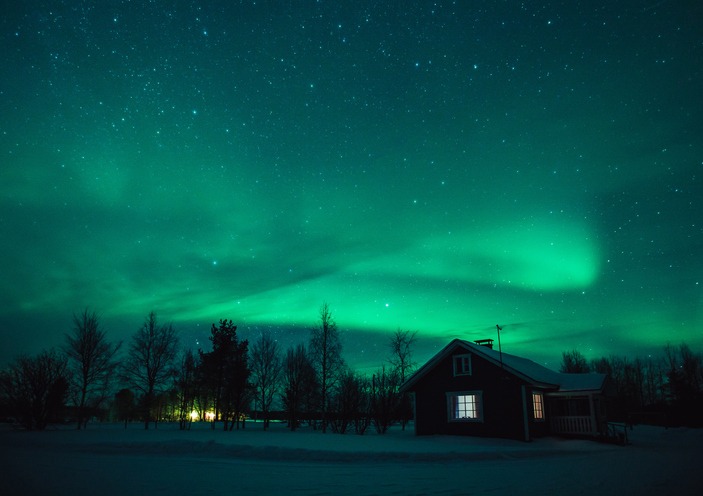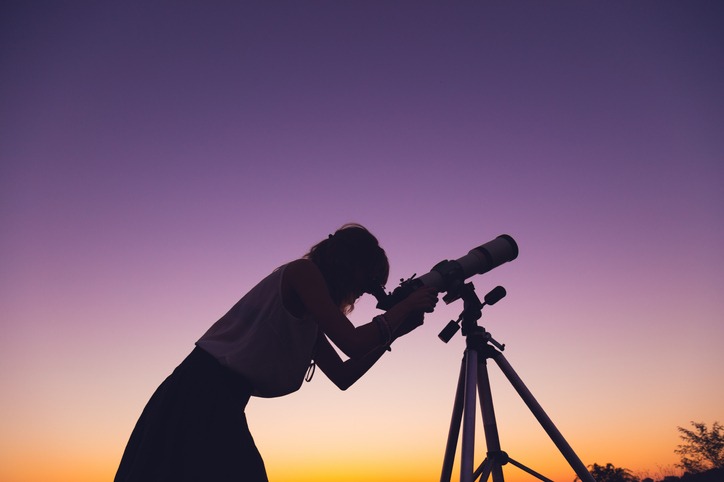The city lights may be a captivating view at night, but there’s nothing quite like looking up to an expansive sky filled with constellations, planets, and shooting stars. Away from the blinding lights and pollution of the city, you can try to get away once in a while to get a clear view of the night sky and learn more about the universe underneath the stars.
Once upon a time, our ancestors did the same thing, too. They looked up at the stars and sought guidance for planning their crops, navigation, and leading them home. Nowadays, people are still pretty fascinated with the night sky, may it be as a hobby or as a way to unwind or by just simply looking up at a dark sky filled with constellations.
If you’re one of those people who longingly gaze at the stars, you’ll opt for the star-studded top of the world mountain perches, desert skies, parks, and reserves, all of which offer the possibility of giving you the best view of the galaxy – dark skies and bright stars. Ready for some adventure? Here’s a list of the best stargazing spots around the world that will leave you in awe at the sky’s ethereal beauty.
National Bridges National Monument, USA
Located in remote Lake Powell, Utah, the Natural Bridges National Monument is the world’s first certified International Dark Sky Park, lying beneath skies almost perfectly free from light pollution. Labeled Class 2 on the Bortle Dark-Sky Scale, the Milky Way and other certain celestial objects are visible to the naked eye in this place.
The designation, bestowed by the International Dark-Sky Association in 2007, the leading organization combating light pollution worldwide, recognizes the area for having some of the clearest and darkest skies in the world. Moreover, it acknowledges the efforts to make it so, making darkness a resource worthy of protecting and conserving.
At the Utah monument, the “river of light” phenomenon serves as the main attraction of the dark skies. The Milky Way creates such a phenomenon as it rises over the Owachomo Bridge, a natural rock formation. As if forming a window into the night sky, the bridge beautifully frames the thousands of stars visible to the naked eye.
Visitors can even drive and hike through stream-carved canyons—home to coyotes, mountain lions, and desert flora—and take in views of centuries-old Native-American ruins before camping overnight. Night photographers can get some breathtaking shots at the Natural Bridges National Monument, but artificial light sources for photography are strictly prohibited.
The Atacama Desert, Chile
Famous for its exceptionally dry conditions, with few rain clouds to obstruct the night sky, Northern Chile’s stark Atacama Desert is optimal for stargazing thanks to its 5000m elevation and near-zero radio interference or light pollution.
One of the world’s leading sites for space observation, the desert’s near-perfect visibility provides crystal-clear views of the Southern Cross, Tarantula Nebula, the Fornax Cluster of galaxies — the most famous constellations of the Southern Hemisphere sky, and even a satellite galaxy of the Milky Way, the Large Magellanic Cloud.
For these reasons, many Astro-tourists from around the world flock to this bucket-list astronomy destination. As it is considered the “North Star” of Astro-tourism on Earth, numerous local hotels and outfitters provide visitors tours and personal stargazing experiences.
Aoraki Mackenzie International Dark Sky Reserve, New Zealand
New Zealand’s Aoraki Mackenzie International Dark Sky Reserve comprises Mt. Cook National Park/Aoraki and the Mackenzie Basin of South Island. The natural night played a critical role in the area’s history when its first residents, the Māori, used the night sky to navigate the island and integrated astronomy and star lore into their culture and daily lives.
It’s the perfect place to preserve and honor their dark-sky heritage as the reserveʼs Mackenzie Basin has the clearest, darkest, and most memorable night sky in New Zealand. With its establishment in 2012, the reserve seeks to honor history by protecting the night sky and an integral part of the areaʼs natural and cultural landscape. Moreover, they helped minimize light pollution for the nearby Mt. John Observatory and helped protect wildlife, conserve energy, and make the area a popular stargazing destination for tourists.
The distant Magellanic Clouds are visible year-round in the reserve. On clear, dark nights, it’s often possible to see the Southern Cross, the Aurora Australis, and the Southern Star—with the park’s namesake peak (reaching more than 12,000 feet) in the backdrop.
Iriomote-Ishigaki National Park, Japan
Located in Japan’s Okinawa Prefecture, the far-flung Iriomote-Ishigaki National Park was the first in Japan to receive the International Dark Sky Park designation. The national park sprawls over a land area of approximately 406.53 square kilometers (157 square miles) of the Yaeyama Islands, the southernmost territory of Japan, close to the Tropic of Cancer.
The park preserves a unique natural subtropical scenery. Moreover, the islands, ringed by living coral reefs, provide refuge for a number of threatened plant and animal species, including an endemic firefly species that relies on natural darkness to survive.
You can enjoy the sky’s stellar night view of up to 84 of the 88 constellations recognized by the International Astronomical Union. However, viewing conditions may depend on the season and weather conditions.
Kruger National Park, South Africa
Kruger National Park, encompassing more than 7,500 square miles, is the largest game reserve in South Africa. It is an iconic safari destination where many visitors come in hopes of sighting the famous Big Five — lions, leopards, rhinos, elephants, and water buffalo. Home to over 100 species of other mammals and over 500 bird species, the park’s flat grassy plains are also perfect for spotting celestial objects.
Kruger’s remote location and lack of light pollution make for impeccable night-sky viewing opportunities; it offers ideal terrain for training binoculars on the Southern Cross, Scorpio, and rings of Saturn. After a bushwalk, sit back, relax and watch the sunset make way for a breathtaking star-studded night sky. This nighttime astronomy experience will surely amp up your simple game-drive itinerary in the wild.
The moment the sun sets and makes way for the night sky, the universe tells a different story. Looking up at a clear, dark sky filled with stars and various celestial bodies opens your eyes to a completely different world out there. The places mentioned above will allow you to have that once-in-a-lifetime astronomical experience you will surely treasure forever.
Mauna Kea, Hawaii, United States
View this post on Instagram
Mauna Kea is located around 2,500 miles from the southwest of California. It has become one of the best destinations for stargazing in the world. Featuring high volcanic peaks and beautiful islands of Hawaii, this place is no doubt the most popular and famous stargazing spot in Hawaii.
You can visit the Mauna Kea observatory, which sits high above the town of Hilo and close to the 13,803-foot Mauna kea’s peak. It is the largest observatory in the world and includes one of the largest and most powerful telescopes in the world.
Pic du Midi, France
View this post on Instagram
The Pic du Midi in France is a location preferred by NASA scientists to take photographs of the moon’s surface for the Apollo missions. This area is basically home to the French Pyrenees mountains and if they are good enough for the scientists, it should be good enough for everyone.
You can take a cable car from La Mongie to the summit, where there is a mountaintop observatory perched above the clouds. In addition to that, the reserve is also home to a UNESCO World Heritage Site. You can even book an overnight stay to sleep directly under the stars.
Kiruna, Sweden

Kiruna is situated north of the Arctic Circle, which is not that far from the border of Sweden with Norway and Finland. Remote Kiruna is around 30 miles from Europe’s largest civilian space center called the Esrange Space Center.
If you wish to be blown away every minute if not seconds, you should visit this area that is home to the nighttime of sky spectacles. Not only do you get to stare into the blanket of glittering constellations but also may get lucky with the presence of the colorful aurora borealis, commonly known as the northern lights.
FAQs: Best Stargazing Destinations In the World
Here are some popular questions asked about the best stargazing destinations in the world.
1. Where is the best place in the world to see the Milky Way?
The Atacama Desert is unarguably the best place to see the Milky Way. Those who have visited the desert recall that there is nothing as exciting or unique as the combination of stars and constellations at night.
2. Can you see the stars in Paris?
Yes, there are several different locations where you can see the stars in Paris. However, at night you should be sure to keep yourself warm as the temperatures might drop significantly. If you are not sure, ask the locals or guides about the perfect stargazing location.
3. Where is the cleanest sky in Europe?
The La Palma in the Canary Islands is known to be one of the best stargazing spots in Europe due to its exceptionally clear skies. Plus, its unique location and position in the Atlantic Ocean offer a natural cloud screen that reflects sunlight away from the sky above.
Conclusion
Concluding, even though there are several other impressive stargazing spots in the world but the ones mentioned above are tried and tested. These spots receive the most number of tourists each year, which is a sign of their unique stargazing features. Therefore, if you are looking for the perfect stargazing spot, make sure to give these a try.

